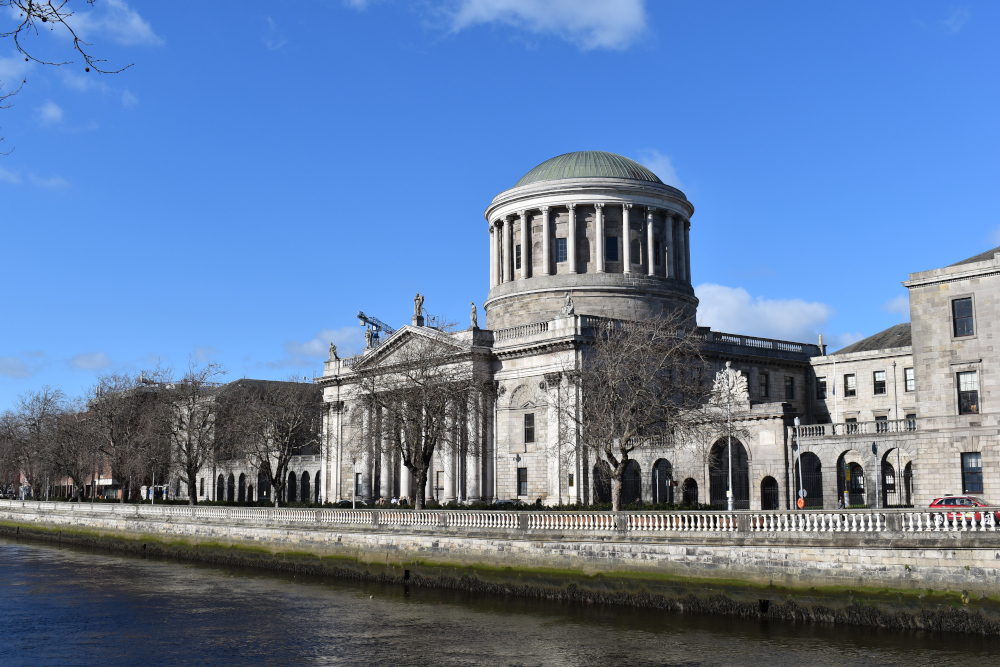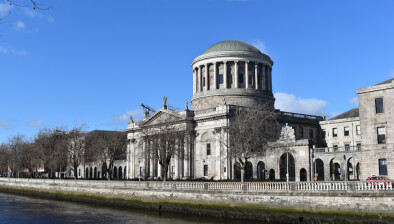High Court: Couple secures order compelling quarrying company to remediate lands near their home

The High Court has ordered a quarrying company to remediate unauthorised works carried out in breach of a court order near the home of a Carlow family.

About this case:
- Citation:[2025] IEHC 551
- Judgment:
- Court:High Court
- Judge:Mr Justice David Nolan
Delivering judgment for the High Court, Mr Justice David Nolan opined: “The development of a quarry adjacent to housing without any planning permission, is the type of action which the planning code was put in place to ensure did not happen. Nonetheless the attitude and actions of the Respondents has meant that it has happened. It must be put right.”
Background
In 2020, the applicants, a married couple, purchased their home in Co Carlow. Having observed that there was an abandoned works across the road from them, they enquired with their neighbours who informed them that the lands, owned by the respondents, were an abandoned test quarry.
The applicants checked Carlow County Council’s planning register and discovered there was no existing permission for a quarry, only an expired permission over a decade old.
In late 2020, a large gate was installed on the lands and a roadway built. The applicants met the second respondent who informed them that the gate had been installed for the purpose of preventing illegal dumping and that he was planning to rent the lands to local farmers. The applicants expressed their delight to the second respondent, noting they would be against quarrying on the site.
In 2022, the second respondent began to bring large vehicles onto the lands and constructed a new drainage system, moving earth and stone. He claimed that he was levelling the land for pasture.
Both the applicants and the Council were concerned in relation to the activity on the respondents’ lands, and the Council wrote to the respondents saying any unauthorised development was against the law and pointed out that it was a criminal offence to carry on such activity.
Proceedings issued and on 30 July 2024, Mr Justice David Holland made an order pursuant to s.160(1)(a) of the Planning and Development Act 2000 (as amended) directing the respondents to cease from carrying out unauthorised quarrying and other activities including blasting, extraction, processing, production, storage or distribution of the stone and associated material removed from the lands.
Notwithstanding the order, the unauthorised activity intensified over the following two months. The applicants then brought an application for attachment and committal, but ultimately decided to seek orders pursuant to s.160(1)(b) of the 2000 Act, directing the respondents to remediate the damage done to the lands by refilling the large craters created by their unauthorised quarrying activities.
The High Court
Mr Justice Nolan considered the evidence before the court, noting inter alia that it was only when the applicants’ motion for attachment and committal was listed that the second respondent gave an undertaking that the works would stop.
The judge further considered the photographs tendered to the court, remarking that the new works had caused “dramatic and detrimental damage to the lands”.
The second respondent contended that his understanding was that part of the lands had a history of quarrying and were compliant with the requirements of planning legislation, and that he should have acted with more diligence.
In this regard, Mr Justice Nolan found the second respondent’s position “difficult to comprehend” and noted that it did not explain the “barefaced lies he told the applicants, which has not been challenged, that he was preparing the lands so that they could be returned to pasture”.
Being in “little doubt” that the respondents “deliberately carried out and intensified that unauthorised work on receipt of the court order”, the judge considered the sanction to be imposed in the context of the notice of motion before the court.
The respondents indicated that they wished to apply for retention permission for the works undertaken, with the applicants arguing that this would be a travesty and would “in essence reward the respondents for their illegal behaviour”.
Noting the discretionary jurisdiction of the court arising from the case law on s.160 of the 2000 Act, Mr Justice Nolan considered that the admitted actions of the respondents amounted to a criminal offence and that the applicants were prima facie entitled to the orders sought.
Having regard to the factors set out in Meath County Council v Murray [2017] IESC 25, the High Court firstly assessed the nature of the breach, observing that same was neither minor, technical nor insignificant and involved extensive digging of a very large quarry, therefore constituting a material, significant and gross breach.
As to the “conduct of the infringer”, Mr Justice Nolan was satisfied that the respondents had exercised an “egregious attitude” to planning control, not only carrying out illegal activities apparently for in excess of a year, but in the face of a court order directing them to stop, the second respondent seemed to have “doubled down” and failed entirely to engage with the planning authorities, his neighbours and the court.
Finding that those actions could not be regarded as mistake or indifference but “must be regarded as culpable disregard”, the court considered that the public interest in upholding the integrity of the planning and development system “could not be more engaged” where the development of a quarry adjacent to housing without any planning permission was the type of action which the planning code was put in place to ensure did not happen.
Finding no delay on part of the applicants where they had been reassured by the Land Registry and “lies told to them by the second named respondent”, the court then turned to the personal circumstances of the respondents.
In that regard, the court found that the respondents’ personal circumstances were “healthy” and opined that notwithstanding that the economic viability of the project may be somewhat threatened in the face of an order to remediate the lands, “the project was an illegal one. By failing to direct the respondents to remediate the lands and allow them to seek retention from the County Council, the court would be rewarding them for their illegal behaviour.”
In the absence of any exceptional circumstances which would come to the respondents’ aid, the court indicated that the justice of the case dictated that an order of remediation should be made.
Conclusion
Accordingly, the High Court made an order requiring the respondents, their servants or agents, licensees or anyone acting in concert with them, to cease the unauthorised use and unauthorised development and that the lands are restored to their condition prior to the commencement of the unauthorised development.
Bencik & Anor v Hilltop Quarries Limited & Anor [2025] IEHC 551









